Fascinations: Computing Film
This year's retrospective program of the Fascination section explores the "forerunners" of artificial intelligence in filmmaking. There is computational cinema, that is, machine "collaboration" in filmmaking. In a selection of short experimental films from different historical periods, you will see generated animation, "computer" patterns of image or sound, as well as films from the avant-garde of the 1920s.

#3
director: Joost Rekveld
original title: #3
country: Netherlands
year: 1994
running time: 5 min.
A tiny light source in motion is captured by an extremely slow exposure, which leaves a trace of its trajectory in the emulsion. The artist prepared an extensive 13-part score for his film number 3, which includes exposure length, colour, camera position, light trail width and speed of movement. At the same time, however, he attached the light to a double pendulum, which behaves completely unpredictably under certain circumstances.“I have long been fascinated by the fact that it is possible to construct a static image using movement and that it is possible to recreate movement by showing several of these static images in succession. In this way, both the images as well as the transformations of those images are caused by interference between the movement of one single light-germ and the movement of the film camera. I regard this as a kind of zero point of photographically recorded film.” - Joost RekveldSource: joostrekveld.net

31/75 Asylum
director: Kurt Kren
original title: 31/75 Asyl
country: Austria
year: 1975
running time: 8 min.
During the three weeks before spring, the filmmaker captured the same panoramic view from the window. Each day, he inserted three identical rolls of film into the camera in a repeating sequence, but each day he put a differently perforated mask on the lens and opened the aperture at different sections of the 90-metre film strip. According to a predetermined scheme, this created a time-lapse collage in which moments of the same place from different times appear side by side.

36
director: Lotte Schreiber, Norbert Pfaffenbichler
original title: 36
country: Austria
year: 2001
running time: 2 min.
The quadratic number 36 and its subsets, including the prime numbers into which it can be broken down, function as the basic organizing principle of a two-minute video divided into three fields in which the transformations of vertical and horizontal structures take place and are linked together by Stefan Németh's minimalist electronic soundtrack. The work recalls early digital aesthetics, absolute film and minimalist compositions.

Abstronic
director: Mary Ellen Bute
original title: Abstronic
country: United States
year: 1952
running time: 6 min.
Images: © Center for Visual Music, Los AngelesThe receding, rotating and frolicking Lissajous shapes, which form curves created by combining two mutually perpendicular oscillations, closely follow the soundtrack created by Aaron Copland's composition Hoe Down (1942) and Don Gillis' Ranch House Party. The film was created with the help of an oscilloscope designed in Bell Laboratories.“Beautiful Lissajous curves can create a choreography that inspires – and startles – the imagination. The resulting beauty and movement contain intimations of occurrences in the sub-atomic world that hitherto have been accessible to the human mind merely as mathematical possibilities.” – Mary Ellen ButeSource: CVM
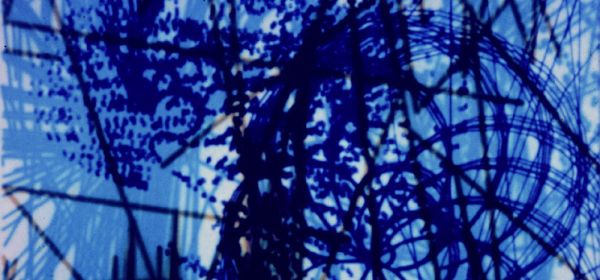
Cibernetik 5.3
director: John Stehura
original title: Cibernetik 5.3
country: United States
year: 1965
running time: 7 min.
Images: Courtesy the artist and Center for Visual MusicA myriad of dots, lines, shapes and neon colours swirl in a stroboscopic whirlwind. The early artificial intelligence of Stehura's editing is more an author than a tool: it does not just generate content based on precise instructions; Stehura brings chance into play. The film consists of fields of images, made up of unexpected permutations of original shapes. The soundtrack, originally also computer-generated, was later supplemented by the buzzing “balloon” composition of Tod Dockstader's Quatermass. “Once all the rules in the program were specified, I simply turned it on to see what would happen. If I liked the results, I'd leave it. At one point I tried to trace back how the computer generated certain forms, but it was becoming too complex and pointless.” – John StehuraQuote source: Gene Youngblood: Expanded Cinema, New York: E. P. Dutton & Co., 1970, s. 241-42.
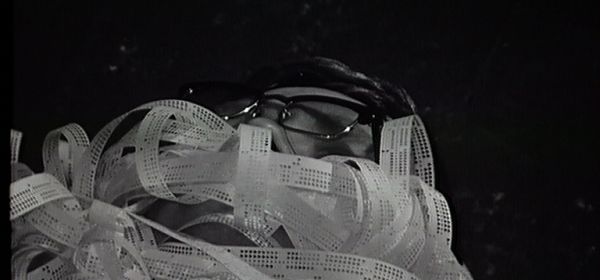
Computer Music
director: Erkki Kurenniemi
original title: Computer Music
country: Finland
year: 1966
running time: 6 min.
The massive physical presence of the Elliott 803 computer from the Department of Nuclear Physics at the University of Helsinki and the IBM 1130 from the Computer Centre at the University of Turku is intimidating. But out of the coexistence of man and machine, music is eventually born. Originally a silent 16mm film, in 2003 the composer added the song The Dream of Sahara (1967), which he composed together with Karim Hakala, who stars in the film.
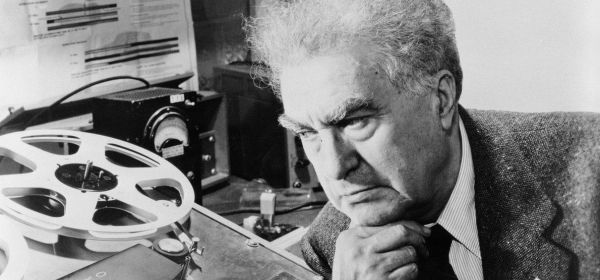
Electronic Poem
director: Edgard Varèse
original title: Poème électronique
country: France
year: 1958
running time: 8 min.
Electronic Poem is a remnant of a visual-acoustic immersive event that took place in the pavilion designed by Iannis Xenakis for the 1958 World Expo in Brussels. Le Corbusier, who was approached by Philips, invited Edgar Varèse to join the project; his electroacoustic composition was played from 400 loudspeakers and accompanied by projections of images selected by Le Corbusier.“The synthesis of art and the latest achievements of science and technology confronts you with the genesis of the earth and the creatures that populate her. It contrasts the playing child with suffering Man, the imminent forces of destruction with the constructive powers of the inspired human mind.”Source: Martin Flašar: Le Corbusier, E. Varèse, I. Xenakis: Poème électronique (1958). Fakta, kontexty, interpretace (dissertation), Brno: Masarykova univerzita, 2009, s. 10.
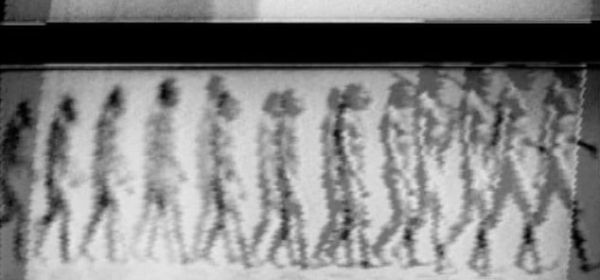
Evolution
director: Steina Vasulka, Woody Vasulka
original title: Evolution
country: United States
year: 1969
running time: 13 min.
Although the video artwork Evolution cites the well-known image of hominid evolution, it is more interested in the evolution of the media than in the evolution of the human species. Through the feedback of a system of video devices and the search for image imitation, it creates a layered (self-)reflection of the media used. It illustrates the gradual peeling back of artistic and technical possibilities in sound, from which an image is generated by directly manipulating the surface of the filmstrip, and in images that generate sound in video feedback.“A three-part tape, comprising the foundations of our early work. Sound-generated images, one activated by video feedback, and a horizontally drifting image.”Source: Steina et Woody Vasulka: Vidéastes, Paris: Ciné-MBXA, Cinédoc, 1984.

Lapis
director: James Whitney
original title: Lapis
country: United States
year: 1966
running time: 10 min.
The philosopher's stone (lapis philosophorum) is commonly regarded as a tool for turning base metal into precious gold; for James Whitney, however, it was a means of changing consciousness. The film, which he created with the help of a mechanical analogue computer, was intended as a tool for transformative meditation. The intricate swirling and teeming patterns are reminiscent of spinning gothic rosettes, accompanied by contemplative music played on the sitar, tanpura and tabla.“Lapis borders on the limits of what I was capable of doing. The machine restricted me; my fantasies couldn’t flow. Of course, we’re in the most primitive stages of cybernetic art, but my inner imagery receded at the same moment that my outer ability to control the instrument broke down.”Source: Gene Youngblood: Expanded Cinema, New York: E. P. Dutton & Co., 1970.
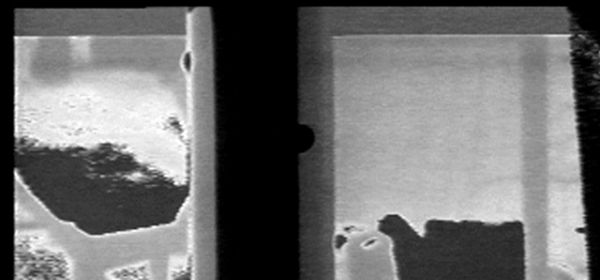
Music on Triggering Surfaces
director: Peer Bode
original title: Music on Triggering Surfaces
country: United States
year: 1978
running time: 3 min.
The changing brightness intensities of the image serve as input into the oscillator, which produces an audio signal based on their shifts. The greyscale shades of the video image being viewed are computationally translated into an audio track, and the moving image thus creates an analogue score for the electronic sound.

Noisefields
director: Steina Vasulka, Woody Vasulka
original title: Noisefields
country: United States
year: 1974
running time: 7 min.
The attack of stroboscopic flashes of changing colours stimulates the eye to its own activity, which is detached from the real image. It is almost impossible to distinguish a light stimulus from a negative afterimage. And yet, in the whirlwind a clear logic is evident, and the audio track helps to reveal it. Is the video static fading into the background, or is it spilling forth in a defined circular space? The video sequencer switches between two video sources and plays out a frenetic game of pulsating electrosignals, materializing in visual and sound fields.“In Noisefields […] a camera was pointed at a sphere. But once the circle was created, electronic snow is keyed through the abstract shape of the circle and a Video Sequencer is used for positive/negative switching at various speeds. This imagery, which merges camerafed and camera-less input sources, is further processed through the Dual Colorizer that changes the color and its intensity.”Source: Yvonne Spielmann: Video and Computer. The Aesthetics of Steina and Woody Vasulka
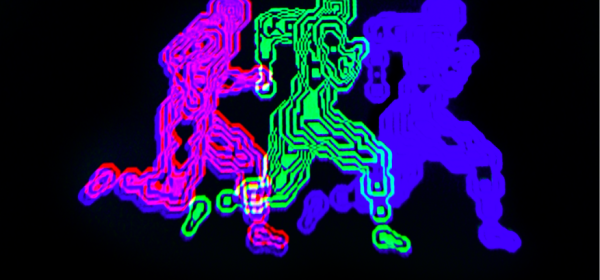
Olympiad
director: Lillian Schwartz
original title: Olympiad
country: United States
year: 1971
running time: 3 min.
One of the first films created on a mainframe computer using punched cards. Vibrating runners appearing to the sound of Max Mathews' computer music cross the field of vision from both sides, sometimes alone, sometimes in groups. The clusters of pulsating coloured dots and lines that define their shape create disjointedly moving ornamental systems. One hundred years on, the series of electronic bodies builds on Muybridge's photographs of the human figure in motion.“What [the computer] can do is subject to what we believe it can do for us […]; the qualitative sensations of the creative act remain the elusive domain of the artist.”Source: Lillian F. Schwartz and Laurens R. Schwartz: Computer Artist’s Handbook, New York: W. W. Norton, 1992.
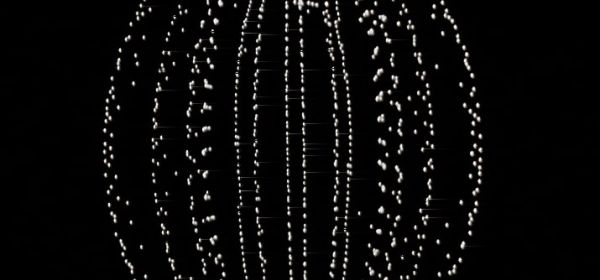
Permutations
director: John Whitney
original title: Permutations
country: United States
year: 1967
running time: 8 min.
The permutations of dancing dot patterns and geometric shapes, which the computer-generated film performs to the playful rhythm of Balachander's tabla playing, test the boundary between order and chaos. The polyphonic visual composition unfolds along an axis of contrapuntal principles, but placing structure against structure instead of note against note.“My computer is like a piano. I could continue to use it creatively all my life.”Source: Gene Youngblood: Expanded Cinema, New York: E. P. Dutton & Co., 1970, s. 207.
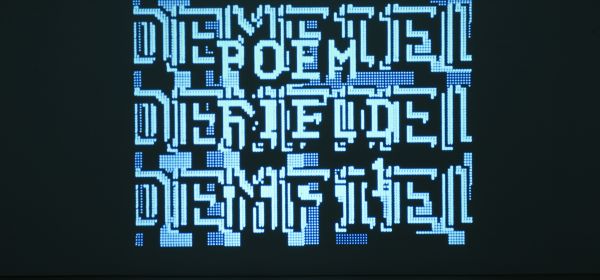
Poemfield No. 1
director: Stan VanDerBeek
original title: Poemfield No. 1
country: United States
year: 1967
running time: 5 min.
The first in an eight-part series of computer-generated animations created in collaboration with Ken Knowlton at Bell Laboratories and using Knowlton's Beflix programming language. The film, in which word becomes image and image becomes word, weaves a rich tapestry of geometric configurations.
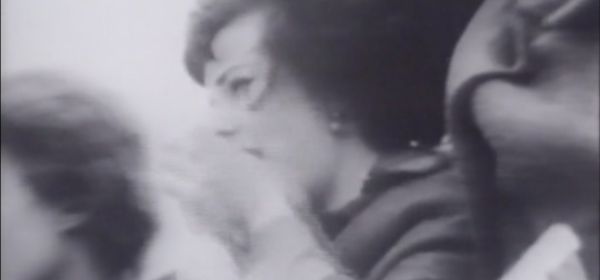
Pushann Pushann
director: Raphael Montañez Ortiz
original title: Pushann Pushann
country: United States
year: 1986
running time: 3 min.
A several-second passage depicting a woman's agitated face is repeated in a loop that decomposes, distorts and reassembles her expression and gesture into an image of masochistic violence, whipped by gusts of voice synthesizer-induced, destroyed sound. The author appropriates the videotape and, through jerks of fast-forwarding and rewinding, it disintegrates the temporality not only of the original shot but also of the event depicted.“Each of the video works on my tape is created from only one carefully selected segment of appropriated footage. It is that single segment that is expanded by disassembling and reassembling the frame structure from its original seconds of an event, to however many minutes of that event are necessary to reveal its submerged secret, its concealed crime, as in Pushann Pushann…”Source: Raphael Montanez Ortiz: Computer-Laser-Video, Digital Media and the Arts.
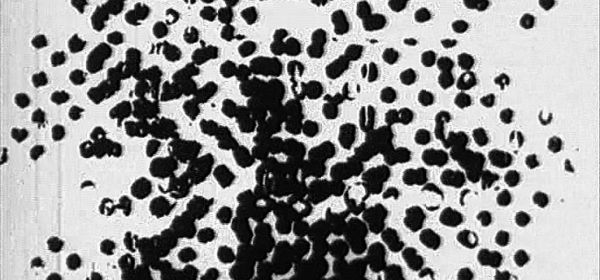
Random
director: Marc Adrian
original title: Random
country: Austria
year: 1963
running time: 4 min.
To ensure the absolute loss of control over the final form, to make personal and aesthetic interventions impossible, to rid the film of any traces of authorial intention; for Marc Adrian, the computer, which he first used in the creation of Random, was a dream guarantee of perfect randomness. The cathode ray generated by the computer is transmitted onto 35mm celluloid, creating loose clusters of light points on a black surface, occasionally interspersed with their negative image.“I reject all forms of indoctrination, entertainment of plot, as well as what I myself could – possibly – tell my imagined audience; every form of meaning or personal mythology has to arise in the spectator himself, because only total chaos assures individual freedom.”Source: sixpackfilm
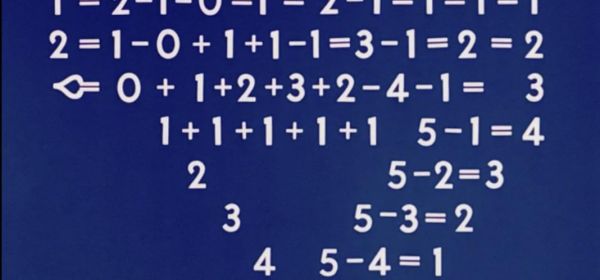
Rythmetic
director: Evelyn Lambart, Norman McLaren
original title: Rythmetic
country: Canada
year: 1956
running time: 8 min.
The single-digit numbers order themselves in simple arithmetic operations in a precisely measured rhythm until they hit the revolutionary, zero. Its defiance then spreads throughout the mathematical community, grinding up threes and ones as it goes, their every movement accompanied by carefully timed sound in this precise stop-motion animation.
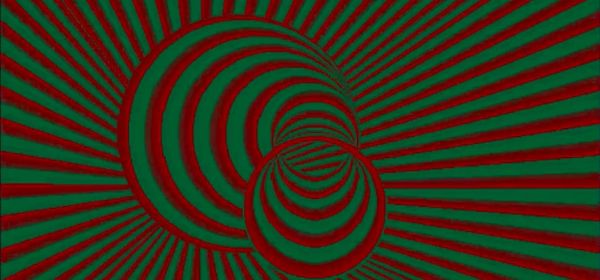
Spirale
director: Pierre Rovere
original title: Spirale
country: Canada
year: 1984
running time: 2 min.
In the 1980s, the Canadian Telidon videotex system was not only used for the transmission of text and image information in telecommunications, but also became the medium of choice for many artists. The short film Spirale is one of the “Telidon” works of early Canadian digital cinema. It uses the tool's vector graphics to create dizzying compositions in an op-art style.
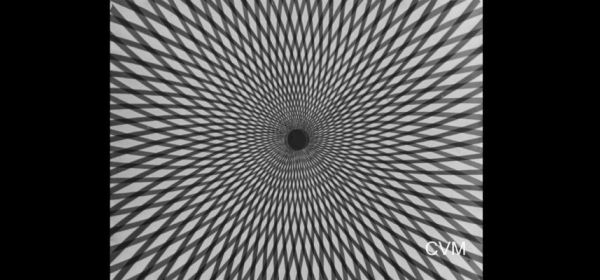
Spirals
director: Oskar Fischinger
original title: Spiralen
country: Germany
year: 1926
running time: 4 min.
Images: © Center for Visual Music, Los AngelesSpirals is one of Fischinger's early experimental films. The visual variations on the expressive devices and formal parameters of music, such as tempo, rhythm and melody, are based on complex geometric patterns that create a sense of depth and infinity when in motion.“I believe the word experiment means a period of searching till a final simple Technik [sic] is found, developed or chosen – through which it is possible to produce expressions which had to be brought into reality – and were somehow deep inside as subconscious desire, ideal or image existing from the beginning. Once the ideal most simplified Technik is found, then one can work with it and doesn't need to experiment with it.” – Oskar FischingerSource: CVM

Sunstone
director: Ed Emshwiller
original title: Sunstone
country: United States
year: 1979
running time: 3 min.
The stone face emerges with difficulty from the two-dimensional surface to eventually overcome not only two-dimensionality, but to overturn the entire system of representation. Similarly deceptive are the initial grey tones of this computer-generated animation; these later transform into colours as if from another world. The video was created at the New York Institute of Technology with the assistance of Alva Ray Smith, later co-founder of Pixar.
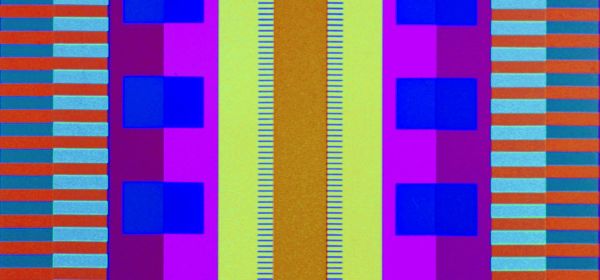
Synchromy
director: Norman McLaren
original title: Synchromy
country: Canada
year: 1971
running time: 8 min.
The ingenious synchronisation of the musical and visual components of the film creates a synaesthetic experience that, thanks to the gradual unveiling of visual-sound analogies, gives the impression of learning a new language. This classic work of avant-garde cinema was created through McLaren's long experimentation with drawing on an optical audio track.

Tarantella
director: Mary Ellen Bute
original title: Tarantella
country: United States
year: 1940
running time: 5 min.
Images: © Center for Visual Music, Los AngelesA brisk tarantella dance, interpreted on the piano by Edwin Gerschefski, translated into dancing circles, segments, points and curves. The staccato movement of geometric coloured forms, reminiscent of Kandinsky's paintings, is interspersed with more lyrical, “fluid” graphics of smoothly changing, elusive form.
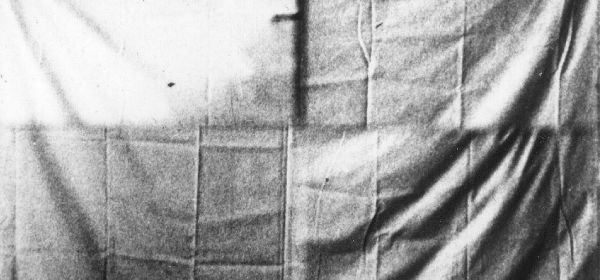
Timing
director: Dóra Maurer
original title: Idömèrès
country: Hungary
year: 1980
running time: 10 min.
An analysis of film time in which the folding of cloth allows for the folds in the passage of time to be explored. The perfect folding of a sheet or tablecloth requires years of practice. Maurer brings this “invisible” domestic work into the environment of black theatre. Only the occasional undulations of the fabric and the detailed documented variations in the timing of individual gestures reveal that behind the thousands of repeated, mechanized movements is the human body.

Two Images For a Computer Piece (With an Interlude)
director: Lloyd Williams
original title: Two Images For a Computer Piece (With an Interlude)
country: United States
year: 1969
running time: 10 min.
The basic material for the computer music composition was supplied by Max Mathews' sound synthesizer from Bell Laboratories and then further processed electronically by Vladimir Ussachevsky. The piece was performed as part of the historically important Composers' Showcase of new music at the Whitney Museum. The unsettling surreal images of the bowels and depths that accompany the music evoke the notion of the birth of the new and perhaps even the terrifying.
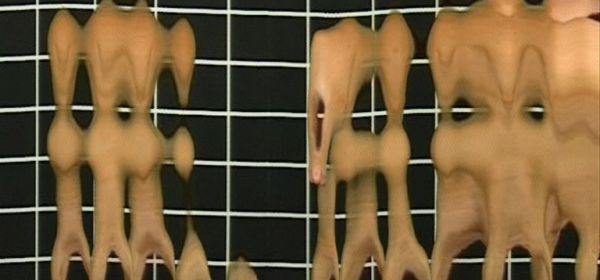
tx-transform
director: Martin Reinhart, Virgil Widrich
original title: tx-transform
country: Austria
year: 1998
running time: 5 min.
Tx-transform is an experimental film technique that interchanges the axis of time and one spatial dimension. All micro-agencies intersect in one dizzying moment; or are there two moments and are they connected by the same place? This dark cinematic tale is based on a colourful illustration of the theory of relativity formulated by mathematician and philosopher Bertrand Russell.“tx-transform is a film technique that transposes the time axis (t) and one of the space axes (x or y) with one another. Normally, each individual frame of a film depicts the entire space, but only a moment in time (1/24 second). With tx-transformed films, it is just the opposite: each frame shows the entire time, but only a tiny portion of space – if one cuts alongside the horizontal space axis, the left portion of the picture turns into the “the before”, the right one into “the after”. This produces phenomena such as those described by Einstein in his theory of relativity.”Source: tx-transform
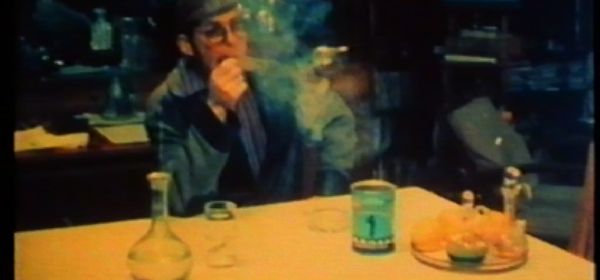
Walk in
director: Moucle Blackout
original title: Walk in
country: Austria
year: 1969
running time: 6 min.
The patterns of synchronisation of musical motifs and plot segments do not emphasize narration, but gestures and movements, the timing of which is governed by the sound component. The minimalist musical composition forces the actor to enter the apartment again and again, rarely allowing him to sit down at the table and light his pipe. The film composition was created by following a predetermined algorithm.










